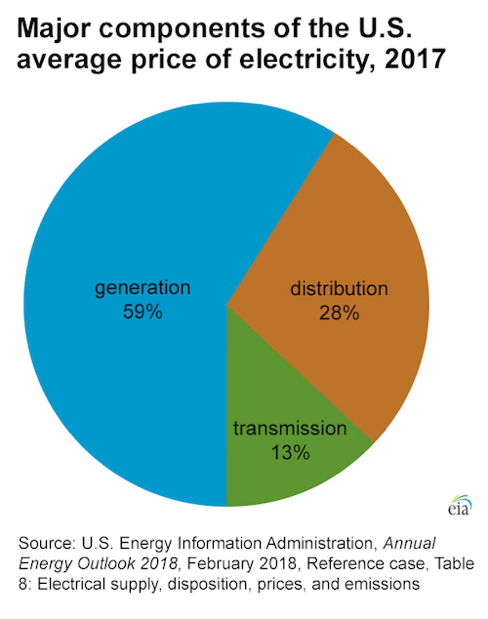It may come as a surprise that what you pay for power is a culmination of many factors.
A lot goes into flipping on that switch: electricity must be generated and delivered through equipment that operates on fuel and requires building and maintenance costs. When the prices of these things increase or decrease, so does your electricity bill. As a matter of fact, prices change every minute, but customers are charged based on seasonal demand.
There are so many factors, some large, some small, that go into determining the price of electricity in the United States:
 Cost of Fuels: Electricity has to be generated and delivered, and these processes take energy supplied by fuels. As you probably know, fuel prices vary, which in turn affects the cost of electricity.
Cost of Fuels: Electricity has to be generated and delivered, and these processes take energy supplied by fuels. As you probably know, fuel prices vary, which in turn affects the cost of electricity.- Power Plant Costs: Like anything else, power plants need to be built and maintained. That, plus the operating costs, have an impact on electricity prices.
- Transmission and Distribution System Costs: Like the point above, distribution and delivery systems also need to be built, maintained, and repaired when necessary.
- Weather: Inclement weather can work for or against you when it comes to electricity costs. Rain and snow can assist in cheaper hydropower generation, while wind keeps turbines spinning. However, extreme weather that increases the demand for electricity can ultimately make it more expensive.
- Regulations: Regulations vary per state, with some service/utility commissions controlling costs and others implementing both unregulated and regulated prices.
- Seasons: Electricity prices tend to be higher in the summer, when there’s usually more consumer demand (presumably for air conditioning). When more people need more power, the need to efficiently generate and deliver electricity increases, along with the cost.
- Location: Given the factors above, it should come as no surprise that the price of power depends on where you live. Factors like power plant availability, local fuel costs, and regulations all impact the cost of electricity.
- Type of Consumer: Believe it or not, industrial customers usually pay less per kilowatt hour (kWh) than commercial and residential customers. This is because they can be supplied a larger amount of electricity at one time, making delivery and generation quicker and cheaper. On the flip side, getting power to consumers who use smaller amounts takes more effort, time, and ultimately, money. Think of it as buying in bulk for wholesale pricing versus getting a little at a time.

